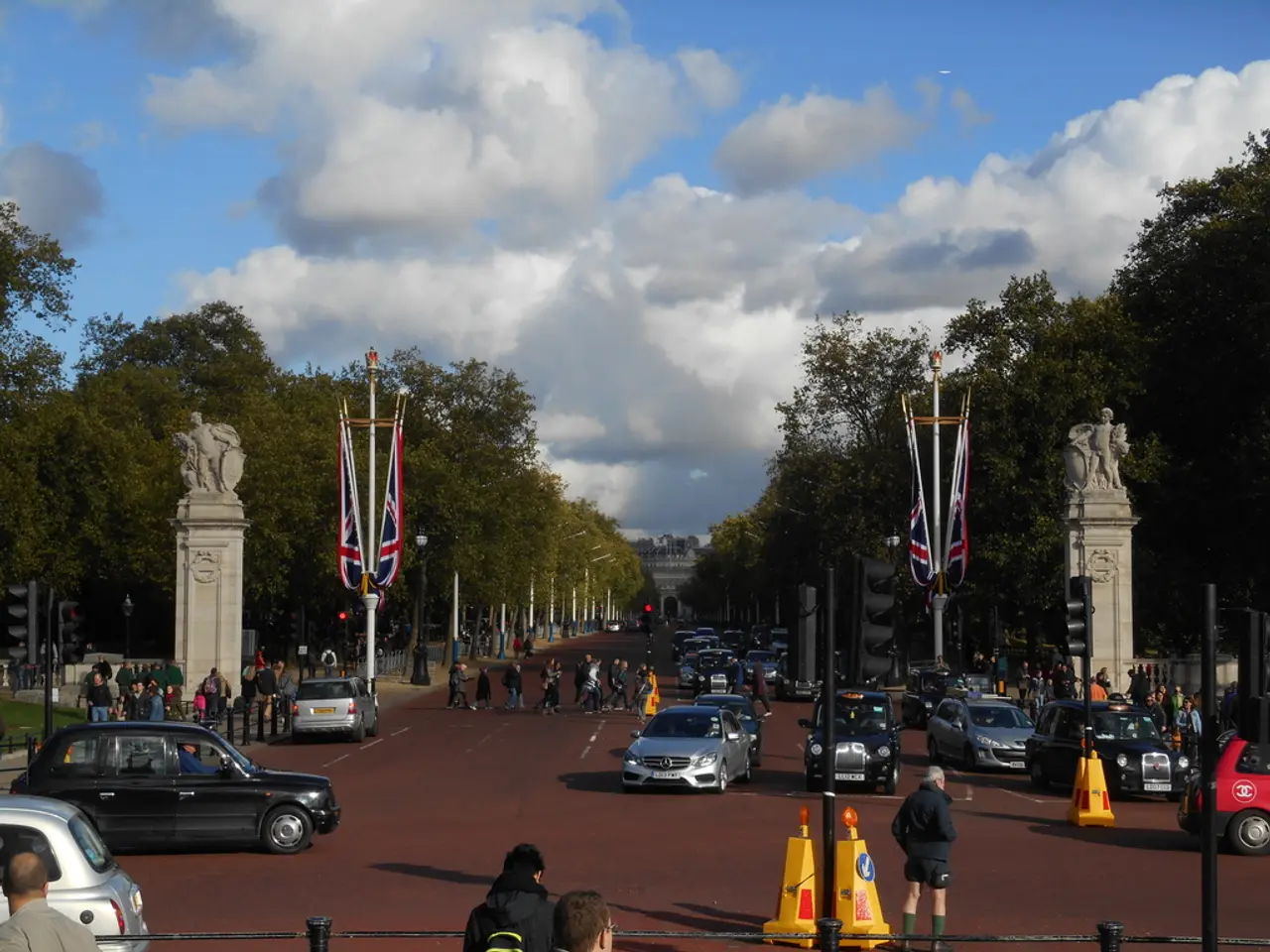Rebuilding Urban Spaces Akin to Tokyo's Pedestrian-Friendly Zones
In the heart of Tokyo, a unique urban phenomenon has emerged - the pedestrian paradise. These spaces, such as the iconic Shibuya Crossing, demonstrate how pedestrian flows can be efficiently coordinated in dense urban areas without chaos.
Tokyo's pedestrian-centric spaces have become a beacon of inspiration for megacity planning, encouraging urban designs that prioritize human-scale environments, social interaction, and cultural vibrancy. The historic example of Edo-period alleys in Tokyo, which fostered social cohesion and sustainable practices, suggests that integrating narrow, pedestrian-friendly pathways and community-focused urban design can make modern cities more livable and resilient.
Moreover, Tokyo's blend of green spaces with bustling pedestrian hubs provides evidence that balancing natural areas with intense pedestrian zones enriches urban life and supports mental well-being. The pedestrian paradises in Tokyo, known as "Hokōsha Tengoku" or "Pedestrian Paradise," have been successful in attracting a significant number of people, with the first day in 1970 attracting 785,000 people, almost two and a half times more than on a usual Sunday.
The pedestrian paradise concept has been implemented in busy districts like Ginza, Shinjuku, Ikebukuro, and Asakusa since the 70s. Today, every weekend, people get an additional 60,000m of walking space in the heart of Tokyo, not counting smaller areas that are blocked off during pedestrian rush hour. The three most prominent pedestrian paradises are located in Akihabara, Shinjuku, and Ginza, making it possible to walk down a seven-lane road lined with ten-story buildings.
The goal of these pedestrian paradises is to create a paradise on Earth by making cities more pedestrian-friendly. While concerns about negative impact on traffic flow and congestion often arise when discussing pedestrian-friendly city planning, Tokyo's investment in public transport infrastructure, creation of pedestrian zones, and aim to reduce air and noise pollution have shown that these concerns can be mitigated.
The pedestrian paradises have inspired similar projects in cities like Time Square in New York and a re-opened canal in Aarhus. Making the pedestrian paradise a weekly occurrence can help people realize the potential of their city and drive further change. The 'World Car Free Day' aims to show people what cities could be like if most public space is not allocated to cars.
These pedestrian-centric spaces serve as dynamic models for traffic management, demonstrating how pedestrian flows can be efficiently coordinated in dense urban areas without chaos. This approach facilitates prioritizing pedestrian movement over vehicles at key intersections, thus improving safety and mobility for foot traffic while still maintaining overall traffic flow. The pedestrian paradises in Tokyo are easy to implement and adapt for every city, allowing for creativity in terms of bike lanes, food stalls, and street furniture.
In conclusion, Tokyo’s pedestrian paradises inform megacities in prioritizing pedestrian-friendly infrastructure that enhances safety, promotes social interaction, and integrates sustainability with traffic management—shifting away from vehicle dominance to a more human-centered urban planning paradigm. This influence is especially relevant for managing rush hour congestion through predictive and flexible traffic control that adapts to pedestrian demands.
In the context of urban planning, Tokyo's pedestrian paradises, such as Akihabara, Shinjuku, and Ginza, are exemplars of home-and-garden design that seamlessly blend natural areas with bustling pedestrian hubs, thereby enriching urban life and supporting mental well-being. Recognizing the potential of these spaces, the concept of pedestrian paradises has been adopted by cities worldwide, including Time Square in New York and Aarhus, as a means to create more livable and resilient urban lifestyles.
The efficiency and coordination of pedestrian flows within these urban paradises serve as dynamic models for traffic management, prioritizing pedestrian movement over vehicles at key intersections to improve safety and mobility for foot traffic while maintaining overall traffic flow. This approach emphasizes a shift from vehicle dominance towards a more human-centered urban lifestyle, suggesting that similar strategies could be implemented in home-and-garden designs and city planning projects.




